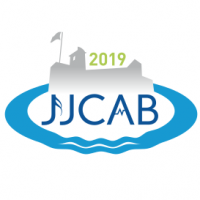- Jeudi 14 novembre :
"Vibration mitigation : Think smart, think robust, think different"
Emeline Sadoulet-Reboul
Femto-st
Les stratégies de réduction vibratoire se sont largement développées ces dernières années aussi bien dans le domaine des solutions actives que des solutions passives, et il s'agit à présent d'imaginer les solutions de demain. Les exigences imposées à ces solutions vont croissant avec des contraintes en précision, en tenue mécanique en environnement sévère (thermiquement par exemple), en poids, en recyclabilité … Dans le même temps, l'émergence de nouvelles technologies de fabrication telle que l'impression 3D et les progrès réalisés en simulation numérique pour étudier des problèmes multiphysiques de grande taille permettent d'imaginer des solutions innovantes de plus en plus complexes, que ce soit en termes de réalisation technologique, d'intégration, ou de couplage physique. Un enjeu est donc de tirer profit de ces développements récents et de l'imagination des chercheurs pour construire les solutions du futur avec de nouveaux objectifs : qu'elles soient miniaturisées, pluri-efficaces, adaptatives, fonctionnalisées … L'objectif de la présentation est de dresser un état des lieux des solutions intelligentes développées dans le domaine du contrôle vibratoire et vibroacoustique, et de détailler plus particulièrement quelques stratégies telles que le contrôle thermiquement adaptatif grâce à un matériau polymère à mémoire de forme, le contrôle multi-modal grâce à un réseau programmable de patchs piézoélectriques shuntés, et le contrôle vibratoire robuste grâce à un réseau architecturé d'absorbeurs dynamiques.
Vibration control techniques have widely developed in recent years in both active and passive solutions, and the purpose is now to design the solutions for tomorrow. The requirements imposed on these solutions are increasing with constraints in precision, mechanical resistance in severe environment (thermal for instance), weight, recyclability, … At the same time, the emergence of new manufacturing technologies such as 3D printing and advances in digital simulation to study large-scale multiphysical problems make it possible to imagine innovative solutions that are increasingly complex, whether in terms of technological implementation, integration or physical coupling. One challenge is therefore to take advantage of these recent developments and the imagination of researchers to build the solutions of the future with new objectives: miniaturization, pluri-efficency, adaptivity, functionalization … The objective of the presentation is to review the smart solutions developed in the field of vibration and vibroacoustic control, and in particular to detail some strategies such as thermal adaptive control using a shape memory polymer material, multi-modal control using a programmable network of shunted piezoelectric patches, and robust vibration control using an architectural network of dynamic absorbers.
- Vendredi 15 novembre :
"Noise and vibration of electric motors: main phenomena, simulation process and overview of the optimization approaches"
Jean-Baptiste Dupont
VibraTec
The noise radiated by an electrical motor is very different from the one generated by an internal combustion engine. It is characterized by the emergence of high frequency pure tones that can be annoying and badly perceived by drivers, even if the overall noise level is rather low. Even if the excitation due to electromagnetic phenomena of electric motors is reasonably well known, the dynamic response of the machines under electromagnetic excitation and the related noise radiation are complex phenomena.
This presentation will give some elements related to the electromagnetic excitation and the vibroacoustic response of electrical machines. A 3-step multiphysical simulation method will also be presented. With the aid of this powerful simulation tool, several electrical machines and their power supply have been optimized over the last few years in order to reduce the radiated noise as much as possible. All steps of the noise generation process have been addressed: optimization of the power supply strategy, modification of the design of the machine structure, variation of the design of the active electromagnetic parts (teeth, magnets…). These strategies are illustrated from real cases taken from the automotive and railway industry. Significant reductions in the noise levels are achieved: 12dB for a starter, 12dB for an alternator, 14dB for a traction motor.

